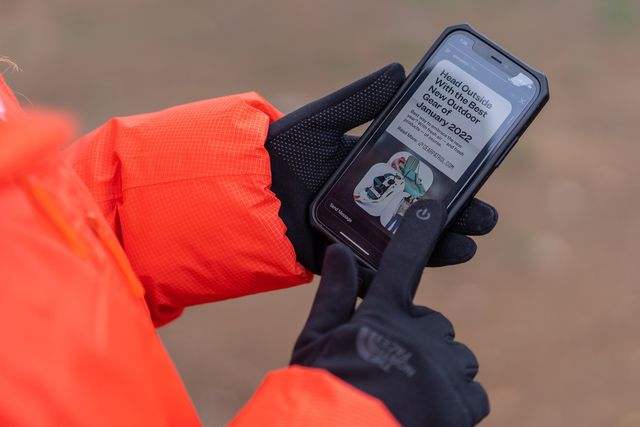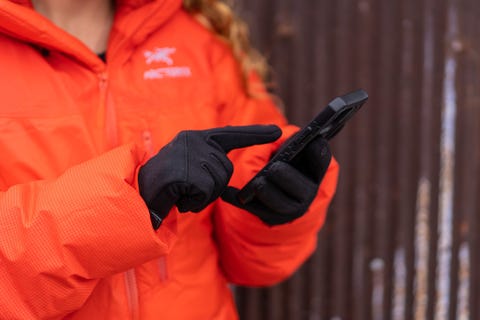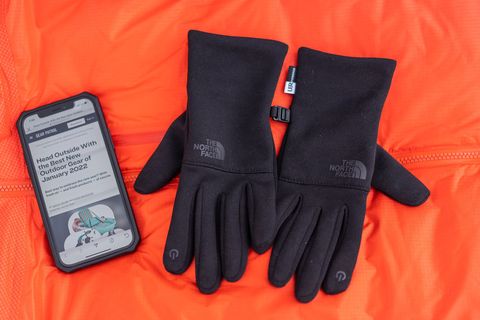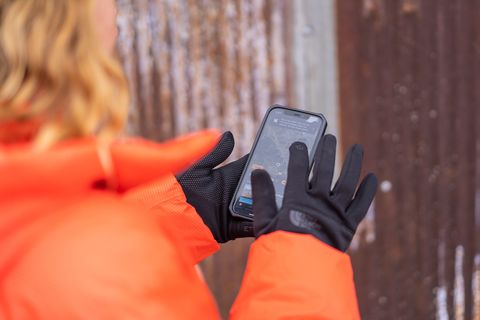It’s 20 degrees Fahrenheit out. You’re not going out without your gloves. You pull them on, grab your bag and head out the door. While walking to your car, you get a text, so you pull out your phone and check who it is. You unlock your phone, read and respond, all without taking your gloves off, and without a second thought. How is this possible? Well, you thought ahead and purchased touchscreen-compatible gloves. But have you ever considered how these modern marvels actually work?
Anyone who has worn a pair of touchscreen gloves knows things aren’t always this idyllic. Sometimes you can’t text accurately because the fingertip on your glove is bulky and keeps hitting multiple letters at once. Other times, it feels like your hands are just too cold for the gloves to work. (Or is that all in your head?) But most times the gloves work, and because they’re so reliable, we start to take them for granted.
While wearing a pair of The North Face’s Etip Gloves on a recent trip to Copper Mountain, it struck me that I had no idea what tech made it possible for me to use my smartphone without taking my gloves off. So I decided to look into it and save you a trip down the magic glove rabbit hole.
What the Tech?
There are two types of tech when it comes to touchscreen-compatible gloves: resistive and capacitive.
Resistive tech uses pressure to detect touch commands. Usually, the screen of a smart device has two layers: the first is a base layer made of glass or plexiglass, and the second is a transparent conductive layer. When you press the screen, you push the top layer into the bottom layer. Using this pressure point, the resistive device identifies the location where the two layers are touching and processes it as the location for your touch command. A common use of resistive tech is in ATMs, checkout stands and terminals — the hard plastic top layer makes them much more durable than capacitive ones (but less responsive).
Capacitive touchscreen tech works differently. Rather than identifying commands using pressure, it relies on capacitance (the ability of a system to store an electric charge). Capacitive touchscreen devices feature a top layer of glass that’s coated with a transparent conductive material, usually indium tin oxide (ITO). When you press the display interface, your finger will absorb some of the electricity flowing through the conductive material, which the device uses as the location of your touch command. This is the tech present in nearly all smartphones, tablets and similar devices.
The TL;DR? When you touch the surface of a capacitive device with touchscreen-compatible gloves, the fingertip with the conductive material acts as a bare finger, absorbing the current and transferring the information from the finger placement to the device. And when the screen doesn't seem to do a damn thing no matter how hard you press... it's probably a resistive tech-based screen.
Material World
So, what's in your glove that allows it to conduct electricity? Different kinds of conductive material are woven into or coated onto the fingertips or thumb. Usually, it's copper yarn, but some gloves also use aluminum or thermal paste. With all materials, the common thread is their ability to absorb the electric current generated by the touchscreen, similar to how your finger would without the glove.
Thermal paste is typically used in computers to protect against heat damage to internal components. Aluminum has less conductive capacity than copper, but it can still be used. More often than not, the material used in your gloves is copper; it's lightweight, highly conductive and commonly available.
The wonder of touchscreen-compatible gloves is one we don't often appreciate; we accept the science for what it is and take for granted our ability to stay connected and protected at the same time. But if you've made it this far, next time you grab your gloves and send a text, you'll be that much wiser.

























